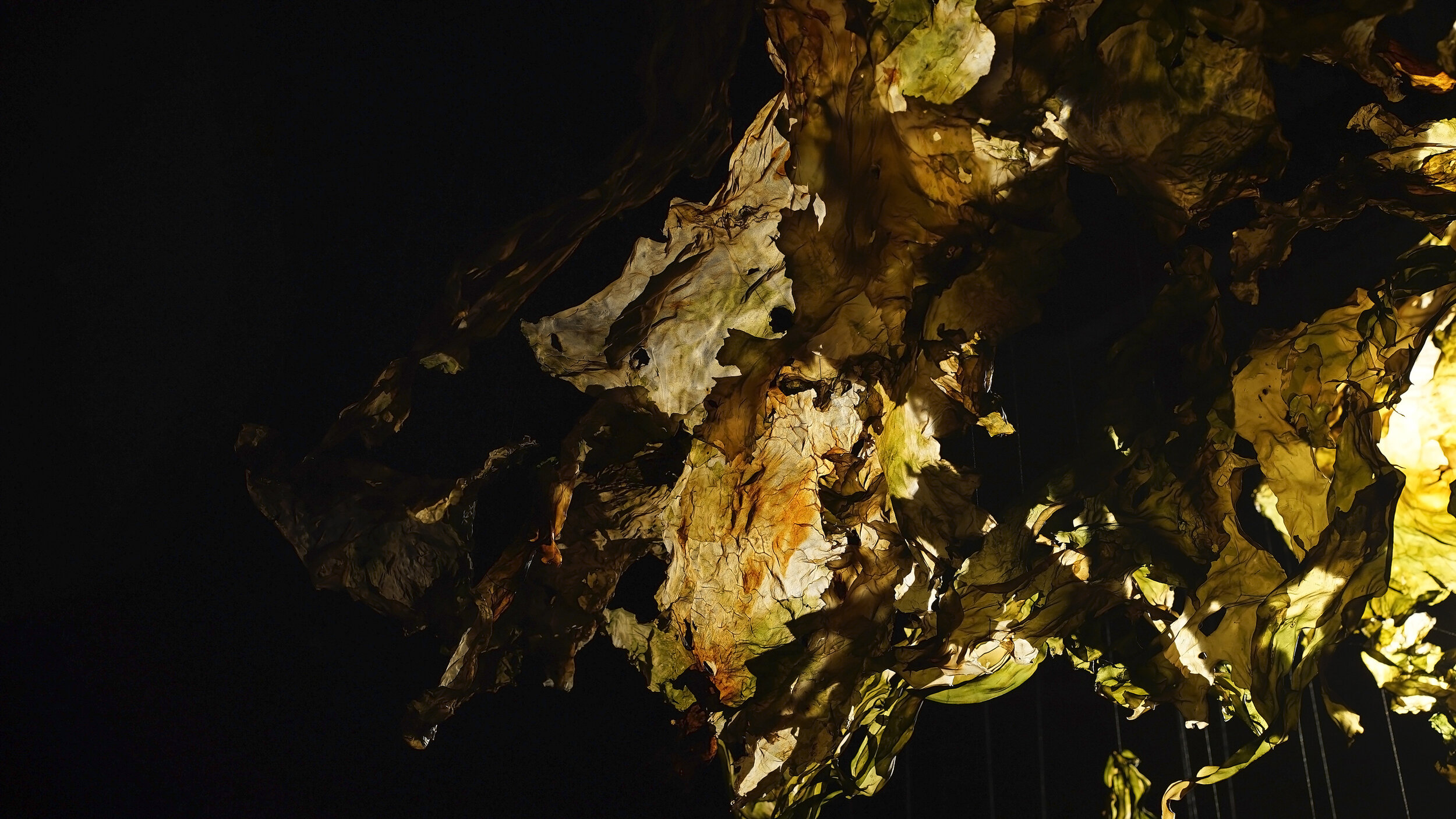―
Sea Glass originated in the Arctic, and grew out of a desire to make sense of one’s place in a particular landscape at a particular point in time. In order to get to know this strange and unfamiliar landscape, the artist walked its coastlines extensively. On these walks, she started to collect seaweed that had washed up tangled amongst the trash and debris on shore. This act of collecting turned into an obsessive, meditative ritual, which also became her way of coping with living in such an isolated place.
SEA GLASS, 2016, seaweed, thread, dimensions variable, installation view
SEA GLASS, 2016, seaweed, thread, dimensions variable, installation view
SEA GLASS (detail), 2016, seaweed, thread, dimensions variable
SEA GLASS (detail), 2016, seaweed, thread, dimensions variable
Like skin, the seaweed that washes up on shore ‘ages’ and becomes more brittle. Exposed to the sun, it thins out or develops stains. But the fragility of these washed up weeds also has an unlikely exquisite patina. When washed, dried and illuminated, the sea grass becomes translucent and glass-like, like semi-precious glass.
SEAGLASS III, 2018, seaweed, thread, dimensions variable, installation view, Østfold Kunstsenter
SEAGLASS III, 2018, seaweed, thread, dimensions variable, installation view, Østfold Kunstsenter








